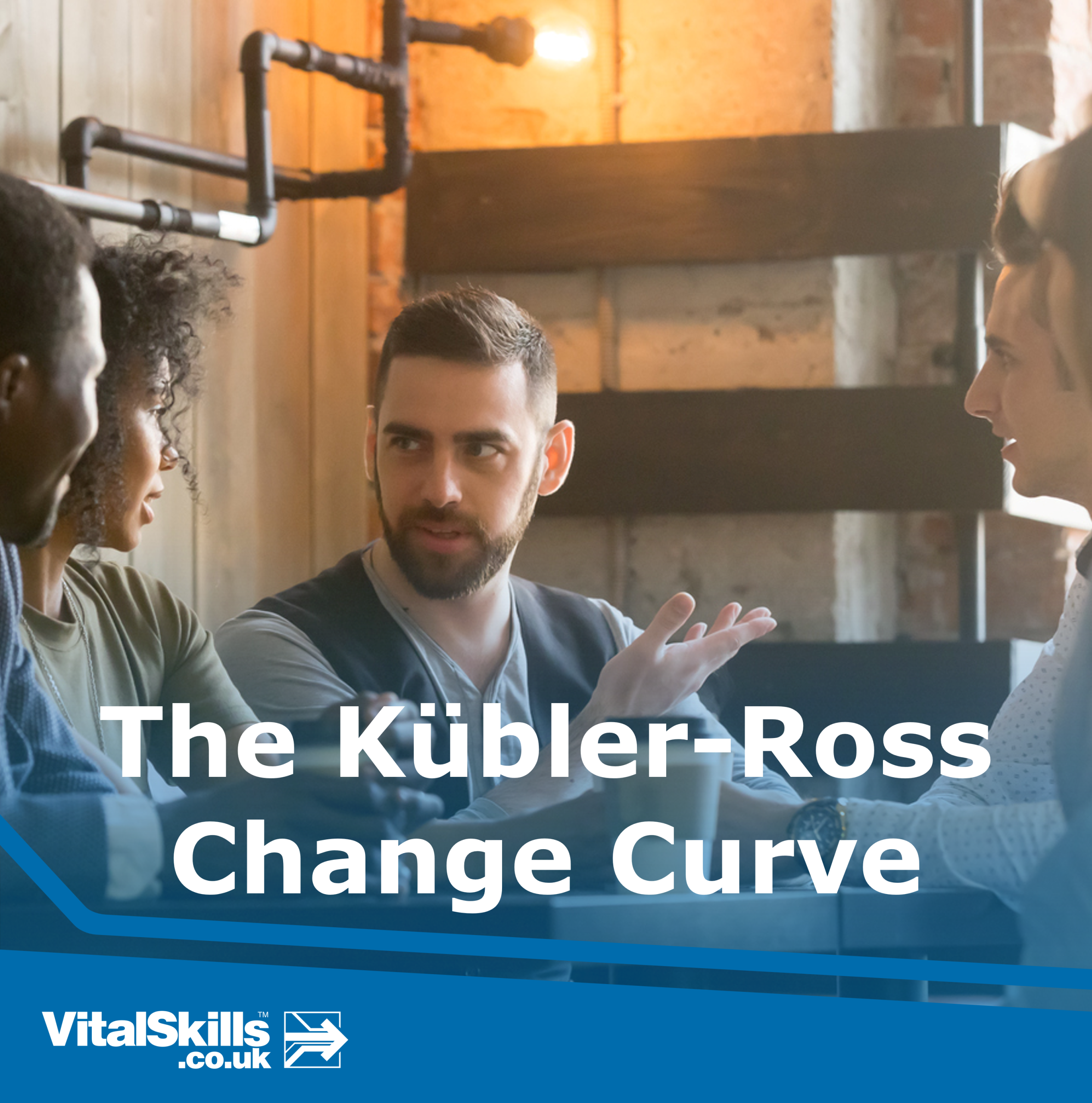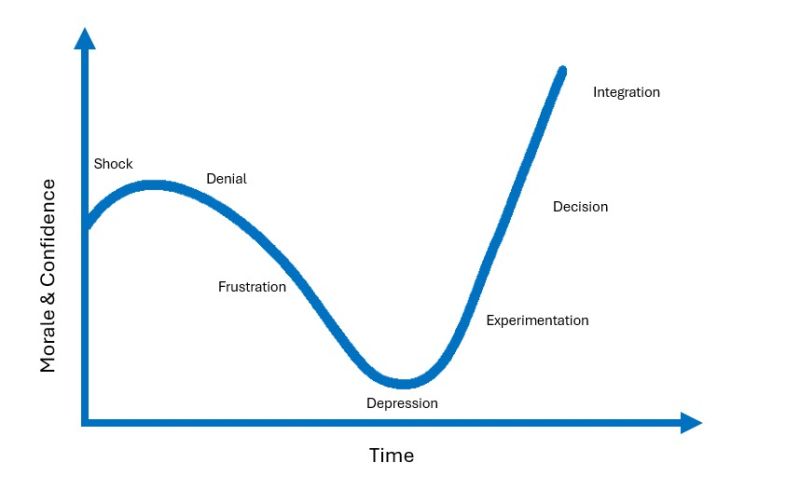
The Kübler-Ross Change Curve Explained – And Why It’s Not the Whole Story
When considering change, many of us will have come across the Kübler-Ross Change Curve.
Originally, Elisabeth Kübler-Ross developed this model in the 1960s to describe the emotional stages people experience when faced with grief and loss. Over time, organisations have adapted it as a way of explaining how people respond to change at work.
The adapted curve splits the experience into seven stages:
- Shock – “This can’t be happening.”
- Denial – “This won’t affect me.”
- Frustration – “Why do we have to do this?”
- Depression – “What’s the point?”
- Experimentation – “Maybe I’ll try it out.”
- Decision – “I think this could work.”
- Integration – “This is the new normal.”

At first glance, it can provide a simple, intuitive way of thinking about how people react to change.
A simple analogy
An analogy which can help explain it is the transition from a paper-based system to a digital one.
At the start, there may be shock and denial. People might say “this won’t work for me,” or “I’ve always done it this way.” Then frustration often creeps in, learning the new system takes time and can feel like a burden.
But as people begin to experiment, small wins start to appear. Perhaps reports are faster to generate, or misplaced paperwork becomes a thing of the past. Gradually, confidence grows, decisions are made to embrace the system, and before long, it becomes the new normal.
In that sense, the curve does help us see that change isn’t just about systems and processes, it’s also about people’s emotions.
Where the model falls short
That said, it’s important not to take the model too literally.
-
Not everyone experiences change the same way.
The model gives the impression that we all march through the same stages in the same order.
In reality, people are unique. One person might leap straight to integration,
while another might remain stuck in frustration.
-
Change is rarely linear.
In practice, people often move back and forth between stages.
Someone may accept change for a time, then slip back into denial when challenges arise.
-
Pain is not inevitable.
The model can imply that suffering is a necessary part of change—that employees must “push through” pain before they adapt.
But as leaders, we should be aiming to make change as painless as possible,
designing transitions in a way that supports people, rather than simply expecting them to endure.
What does this mean for leaders?
The value of the Kübler-Ross Curve lies less in its strict sequence of stages
and more in its reminder that emotions matter in change.
Too often, organisations focus solely on the technical or procedural side such as new tools,
policies, or processes. And they can overlook the human impact.
The curve highlights that change is felt personally, not just operationally.
Final thoughts
The Kübler-Ross Change Curve is a useful conversation starter.
It gives us a language for recognising that change isn’t purely rational, it’s emotional.
However, it shouldn’t be seen as a rulebook, nor should we accept that
“pain is just part of change.” With the right planning, communication,
and support, change can be positive, engaging, and even energising.
More Information
Our Leadership and Management courses 👉 https://hsqe.co.uk/courses/?swoof=1&product_cat=leadership-management
Make sure you are following our social media channels and sign up to our monthly newsletter to ensure you are not missing out:
LinkedIn 👉 https://www.linkedin.com/company/hsqe-limited/
Facebook 👉 https://facebook.com/hsqe.co.uk
Newsletters 👉 https://www.hsqe.co.uk/downloads/#newsletters
—
Author: Alex Nightingale
(c) HSQE Ltd 26/08/25